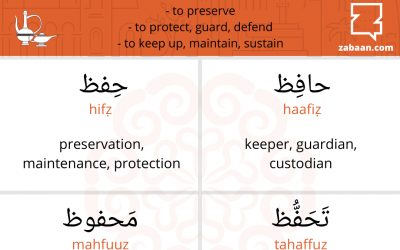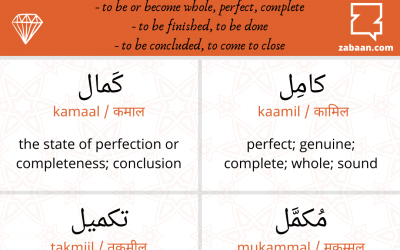Hindi
Learn more about our Hindi classes in Delhi and Mumbai!Zabaan has been conducting Hindi classes for expats and foreigners at different levels of proficiency since its inception in 2009. We have both intensive lessons for fast-track learning and slow paced evening classes for working professionals. If you prefer a flexible schedule, we also offer private in-person and online classes.
Hindi for Beginners (ELH1)
- Proficiency Level Reached: A1-
- Prerequisite(s): none
- Course Materials: Teach Yourself Hindi
- Frequency: Twice or thrice weekly
- Duration: 5 weeks, 15 class hours
Lower Elementary Hindi (ELH2)
Upper Elementary Hindi I (ELH3)
Upper Elementary Hindi II (ELH4)
Intensive Elementary Hindi
- Proficiency Level Reached: A1, A2–
- Prerequisite(s): none
- Course Materials: Teach Yourself Hindi
- Days: Mon-Fri
- Times: 9:15-12:30
- Duration: 4 weeks, 60 class hours
Intensive Lower Intermediate Hindi
Hindi Private & Online Lessons
For students with specific goals or a unique schedule, private lessons are custom tailored to improve your language skills at a pace and learning style that’s right for you. Lessons plans and materials are custom designed to fit your needs and help you reach your goals. Available for individuals, couples, or small groups, private lessons can take place at Zabaan’s language centre or at your home or office in Delhi or Mumbai (travel costs apply) or online over Skype or Google Hangouts.
Check out some of our blogs about Hindi!
Why Zabaan
When I first enrolled as a student in Zabaan, the name suggested Urdu to me, all the way. I did not even think any other Indian languages were taught at Zabaan. I was astonished to find out much later that Urdu was only a small part of the offerings of this amazing school.
Haafiz–the one who protects
The trilateral root 'ha-fi-za' in Arabic means to protect, preserve, guard or sustain. Hifz is the noun form of the root and it means 'preservation' or 'protection'. In Hindi/Urdu we also use hifaazat (protection, safety) which is a derivative of...
Kamaal–the State of Perfection
Ka-ma-la, the Arabic trilateral root for 'perfection'. Most Hindi/Urdu speakers are familiar with this root from usages like kamaal ka meaning 'excellent, wonderful' and 'kamaal hai!' which means 'Great!' but more often than not, it expresses a...
Beautifully Broken: Understanding the Peculiarities of Bambaiyya Hindi
In this blog Srotoswini delves into the idiosyncracies of Hindi as spoken in Mumbai! “…ye saala men log, humesha humari vaat laga deta hai!, ” - a woman, complaining about her daily life at work. “…arey bantai, mai kabse idharich khada hai. Tereko...
“Unlike other programs that teach the language in a “this is the way it is” type format, Zabaan focuses on the underlying grammatical reasons for why the language is structured the way it is. For a language that is so different from english (and includes concepts that are foreign to native english speakers), I have found that this provided much needed clarity, and has paid dividends later on in my Hindi studies.”
Read Full Review
At the end of the 4 week group course, I walked away being able to read and write the Hindi (Devanagari) script, as well as engage in very basic conversation (survival Hindi). The course is based on the Teach Yourself Hindi text, and during the 4 weeks, approximately 1/2 of the book was covered. My remaining time at Zabaan was spent finishing the book, reviewing grammar, as well as reading short stories and news articles.
Zabaan is really only one of two languages schools in India offering comprehensive and reputable Hindi language instruction oriented for western students. The other being AIIS. The reason for this comes down to the caliber of instructors employed at Zabaan, of which consists of formally/university trained linguists that truly understand both Hindi and English grammar. Unlike other programs that teach the language in a “this is the way it is” type format, Zabaan focuses on the underlying grammatical reasons for why the language is structured the way it is. For a language that is so different from english (and includes concepts that are foreign to native english speakers), I have found that this provided much needed clarity, and has paid dividends later on in my Hindi studies.
Despite having intensively studied foreign languages at a top american university, the pace of Zabaan’s group course took getting use to. But it was manageable. This pace reflects the clientele of Zabaan, which tends to be a group of individuals seriously committed to language learning. Students included US Fulbright and FLAS Fellows, as well as diplomats, British journalists, graduate students, and US military personnel. The prices for private group lessons certainly reflect this western orientation. Though, if you can pair up with other students as I did, prices will be significantly reduced, and end up costing less than other programs in India.
In line with what a couple reviews have pointed out, Zabaan is not without its quirks. I tend to attribute this mainly to differences in culture. However, regarding language instruction, I have the utmost confidence in their ability to effectively teach Hindi, and for this reason, I recommend them for anyone seriously interested in studying Hindi.




